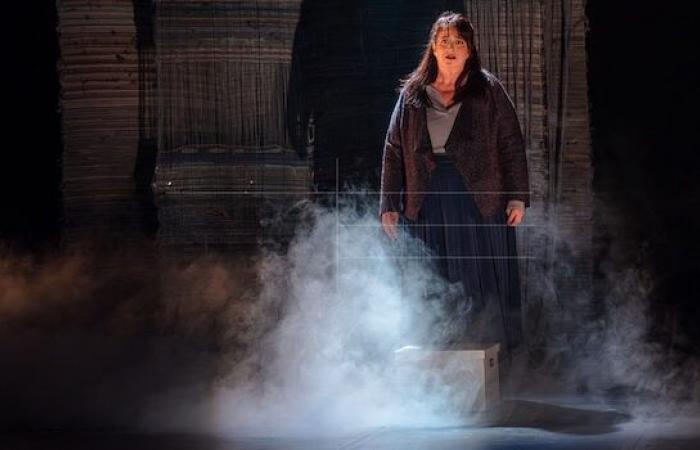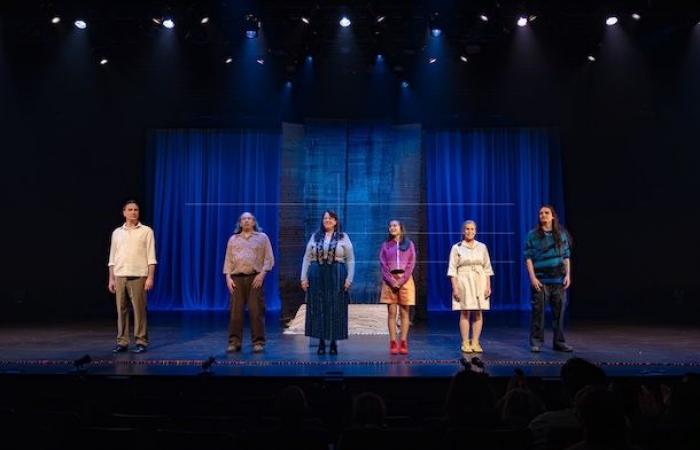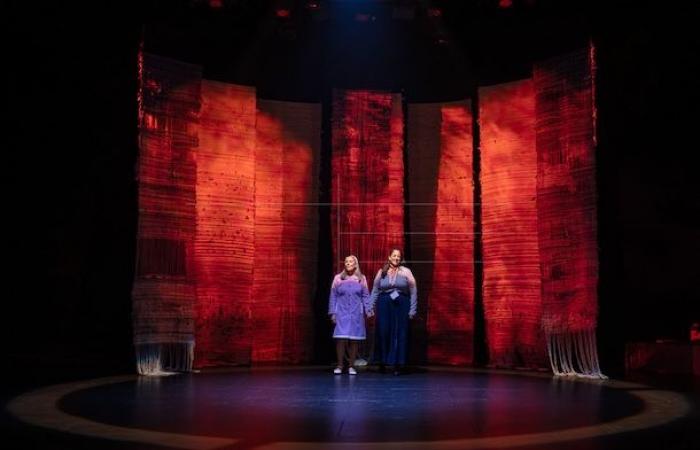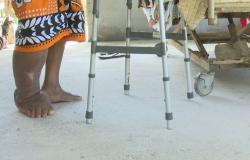Lhe play “Yahndawa’: what we are” by author, director and actress Marie-Josée Bastien revisits the Atiawenrahk River (the Saint-Charles River) as a symbol of the link between the indigenous community of Wendake and the City of Quebec, thereby embodying the dual Quebecois and Wendat identity of the designer. Presented in collaboration with the Théâtre Stratégie Parking and Productions Menuentakuan, this work can be discovered these days at the Théâtre du Trident and very soon at the Théâtre Aux Écuries.
On the fine line between oral presentation and autofiction
This show, structured into five segments each representing an ancestor of the author, begins with a significant meeting between Agnolien, activist for the protection of the Saint-Charles River, and his descendant Ludger Bastien, first indigenous member of Quebec in 1924, performed by Charles Bender, artistic director of Menuentakuan Productions.
This face-to-face meeting between generations – an environmental activist and a leader victorious politics of the Wendake community – has strong dramatic potential. However, Marie-Josée Bastien’s narration adopts a didactic tone, almost giving a documentary aspect to the story of Ludger Bastien.
Although the historical exposition is captivating, it tends to overshadow the essential tension of the scene, which lies in the reminder that every individual choice, in Aboriginal culture, leaves lasting marks for seven generations to come.
Photo: Stéphane Bourgeois
The following segment explores Armand’s journey, interpreted with intensity by Marco Poulin. The latter enlists in the army during World War II, fighting for a country that despises its people. Marked by experiences of humiliation and colonial stigmata, his life ended tragically with a jump into the twenty-eight meter Kabir-Kouba waterfall, on the banks of the Saint-Charles River.
Marco Poulin’s performance stands out here, recalling a poignant passage from James Baldwin, author and activist for black civil rights in the United States, describing his grandfather who lived under the segregationist laws of the South: “He was defeated long before he died, because deep down he really believed what the white people said about him”.
This quote resonates powerfully in the fate of Armand, defeated by an oppressive system.
On the place of women in indigenous struggles
The third segment, the longest, traces the story of Adèle, Armand’s daughter, played by Andrée Lévesque Sioui. After her marriage to Pierre, Adèle leaves the reserve, but then loses her Indian status, a fact which prevents her from returning to her community despite the demands of the years of the Quiet Revolution.
Her daughter, Elizabeth, played by Marie-Josée Bastien herself, returns from Whitehorse to take care of her mother suffering from Alzheimer’s. In a particularly poignant twist, Adèle, cared for by a member of Wendake, finds her native language as she gradually loses her bearings. She died on July 5, 1985, the symbolic day on which the law canceling the loss of status of indigenous women was repealed, finally restoring her belonging to the community.
The touching performance of Andrée Lévesque Sioui suffering from Alzheimer’s particularly shines when Adèle becomes vulnerable again alongside her daughter in the midst of a heartbreaking moment.
Photo: Stéphane Bourgeois
While one might believe the play ended after Adèle’s story, the show still reserves a final segment centered on Yandcha, Elizabeth’s daughter, played by Océane Kitura Bohémier-Tootoo. A young indigenous influencer, the latter returns to Wendake to honor the memory of her grandmother Adèle.
Following a discussion with her mother and encouragement to reconnect with her origins, she decided to participate in the bell dance at the powwow the following year. This ritual, imbued with spirituality, brings healing in indigenous culture: every day, for a year, a bell is sewn onto a dress, each accompanied by a prayer.
This ceremony symbolizes a return to roots and a process of reconciliation and inheritance.
As I left the room, it seemed to me that this scene could have been a work in its own right, but it fits perfectly with the rest of the piece, concluding on a note of hope. Yandcha, played with finesse by Océane Kitura Bohémier-Tootoo, represents the young indigenous generation who are reconnecting with their identity and traditions.
This conclusion, evoking the healing of generational wounds, offers a vibrant tribute to Indigenous resilience while instructing the audience in a fascinating and meaningful dance.
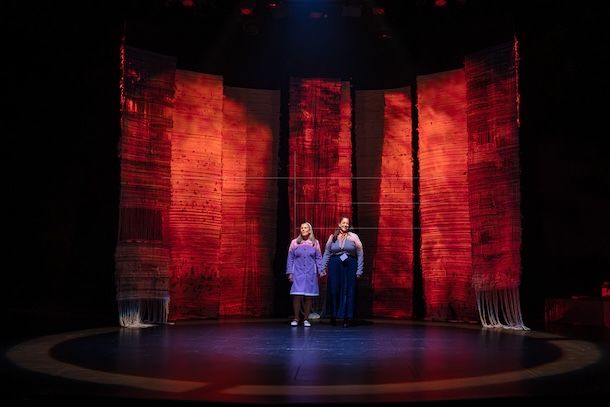
Photo: Stéphane Bourgeois
More indigenous theater in Quebec, please!
In short, despite sometimes being a little too didactic, the play is definitely worth seeing. If only for the performance of the actors, or the simple fact of opening up to indigenous theater, a cultural perspective that is so rarely present on our stages!

